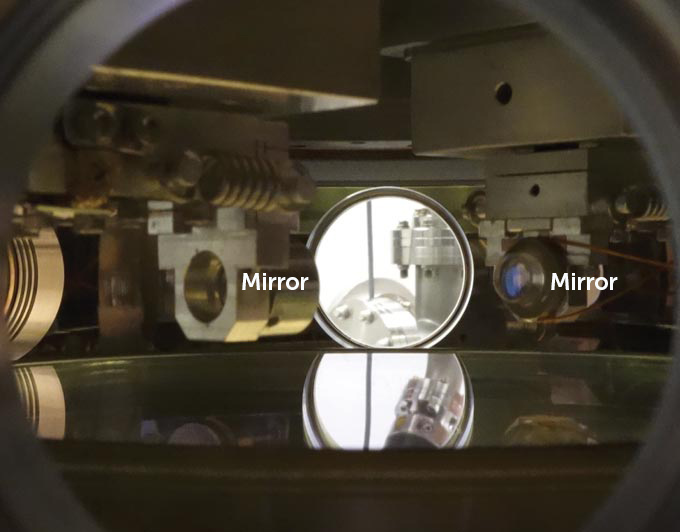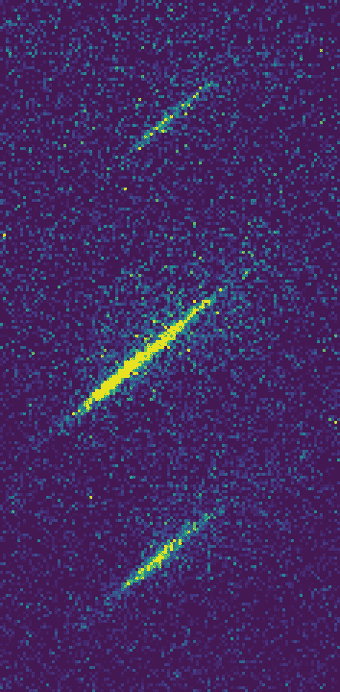
“I like it if I can run uphill and be rewarded with a view of the bay,” says Monika Schleier-Smith. She’s talking about a favorite spot to exercise around Palo Alto, Calif., but the sentiment also applies to her scientific work. A physicist at Stanford, Schleier-Smith, 36, has a reputation for embracing the uphill climb. She’ll push, push, push the smallest details of an experiment until she achieves what others thought near impossible.
Her reward? Seeing large ensembles of atoms do her bidding and interact with one another over distances that are incredibly vast, at least for the quantum realm.
“She tends to persist,” says Harvard physicist Susanne Yelin, who follows Schleier-Smith’s research. She gets results, even though “everything that exists in nature” is working against her experiments.
Quantum physics describes a microworld where many possibilities reign. Unobserved atoms and particles don’t have clearly defined locations, and information can be shared by widely spaced parts of a system. “We have equations that describe quantum mechanics well, but we can’t solve them when we are dealing with more than a few particles,” Schleier-Smith says.
That’s a shame, because understanding how large numbers of these small entities interact is essential to figuring out how our world works at the most fundamental level. Getting atoms to behave in just the right ways also has some practical benefits. It could lead to the most precise clocks yet, a boon for precision measurement, and to quantum computers that can solve problems that are too hard for today’s supercomputers.
Schleier-Smith’s experimental setups use elaborate tabletop arrangements of mirrors, lasers, vacuum chambers and electronic parts to cool atoms, pin them in place and then manipulate them with light. It’s a clutter of essential components, the construction of which requires an exacting understanding of the physics at play plus engineering know-how.
 Monika Schleier-Smith and her team trap cold atoms between two mirrors (shown). The setup allows the team to image the atoms.Schleier-Smith Lab
Monika Schleier-Smith and her team trap cold atoms between two mirrors (shown). The setup allows the team to image the atoms.Schleier-Smith Lab
As a graduate student at MIT, Schleier-Smith worked with a small team that pushed the precision of an atomic clock beyond what’s known as the “standard quantum limit,” a result reported in 2010. Though people knew this was theoretically possible, many thought it was too hard to try to pull off. Schleier-Smith spent weeks optimizing and troubleshooting the control circuitry that kept the experiment’s lasers at the right frequency, says Ian Leroux, who was on the MIT team and is now at Canada’s National Research Council Metrology Research Centre in Ottawa. She has “that blend of care, dexterity, observation and attention to detail that lets her make an apparatus work better than it has any right to.”
 In a recent experiment, an excitation in trapped atoms, in this case a flip in a property called spin, was observed hopping across the atom cloud. The three cigar shapes show the hopping in a single cloud (spin states +1, -1 and 0, from top to bottom).Schleier-Smith Lab
In a recent experiment, an excitation in trapped atoms, in this case a flip in a property called spin, was observed hopping across the atom cloud. The three cigar shapes show the hopping in a single cloud (spin states +1, -1 and 0, from top to bottom).Schleier-Smith LabIn a more recent experimental feat, reported in January in Physical Review Letters, Schleier-Smith and her Stanford team used laser light to create long-distance interactions in a cloud of some 100,000 cold rubidium atoms. The atoms chatted up other atoms half a millimeter away — a great distance for atoms. At Schleier-Smith’s direction, an excitation in the atoms, in this case a flip in a property called spin, hopped from one side of the atom cloud to another, using a photon to bypass the atoms in between. What’s more, the team found a way to image that hopping.
Schleier-Smith traces her interest in physics back to high school, when a chemistry teacher told her to think of an electron as “spread out like peanut butter.” The idea fascinated her. She sensed that a deeper understanding meant studying quantum mechanics.
It’s not an insight you’d expect from the average high schooler. But such clarity of vision has been a characteristic of Schleier-Smith’s work.
She quickly identifies ideas that are both interesting and experimentally feasible, says graduate student Emily Davis, who has worked in Schleier-Smith’s lab since 2013. (About half of the current lab members are female, atypical in such a male-dominated field.)
“I tend to be fairly intuitive,” Schleier-Smith says. “I think it is a matter of how my brain works.”
And she readily sees through other scientists’ questionable assumptions, Leroux says. With a cloud of thousands of atoms, her spin-hopping setup bucks a commonsense argument that you need to hold atoms in a very small space to get good control of their electromagnetic interactions.
That setup might also have value in studying black holes. Theories that attempt to connect quantum physics with Albert Einstein’s theory of gravity — general relativity — lead to specific predictions about what happens to information that falls into black holes. The information might get mixed up exponentially quickly through long-range interactions analogous to those Schleier-Smith has demonstrated.
“She has built an exceptionally powerful platform for exploring these phenomena in the lab,” says Stephen Shenker, a theoretical physicist at Stanford who works at the intersection of quantum physics and gravity.
Could pursuing connections to black holes reveal something interesting about how atoms interact, as well as how to control those interactions? Schleier-Smith can’t say for sure, but she sees the potential.
Source: Physics - www.sciencenews.org



